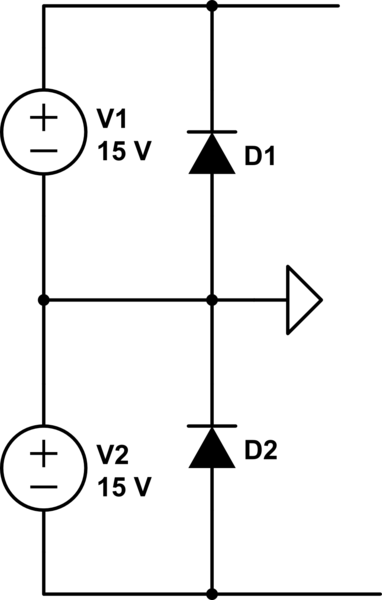I am using two identical Meanwell LRS-150-15 power supplies to produce +15VDC and -15VDC compared to ground. My ground is tied to earth. The setup with its connectors and nets is represented in the image bellow:
Is this setup theoretically safe? Is there a risk current might flow in an undesired way without integrating diodes? Should I place diodes on the -15V net as well as the +15V one?


